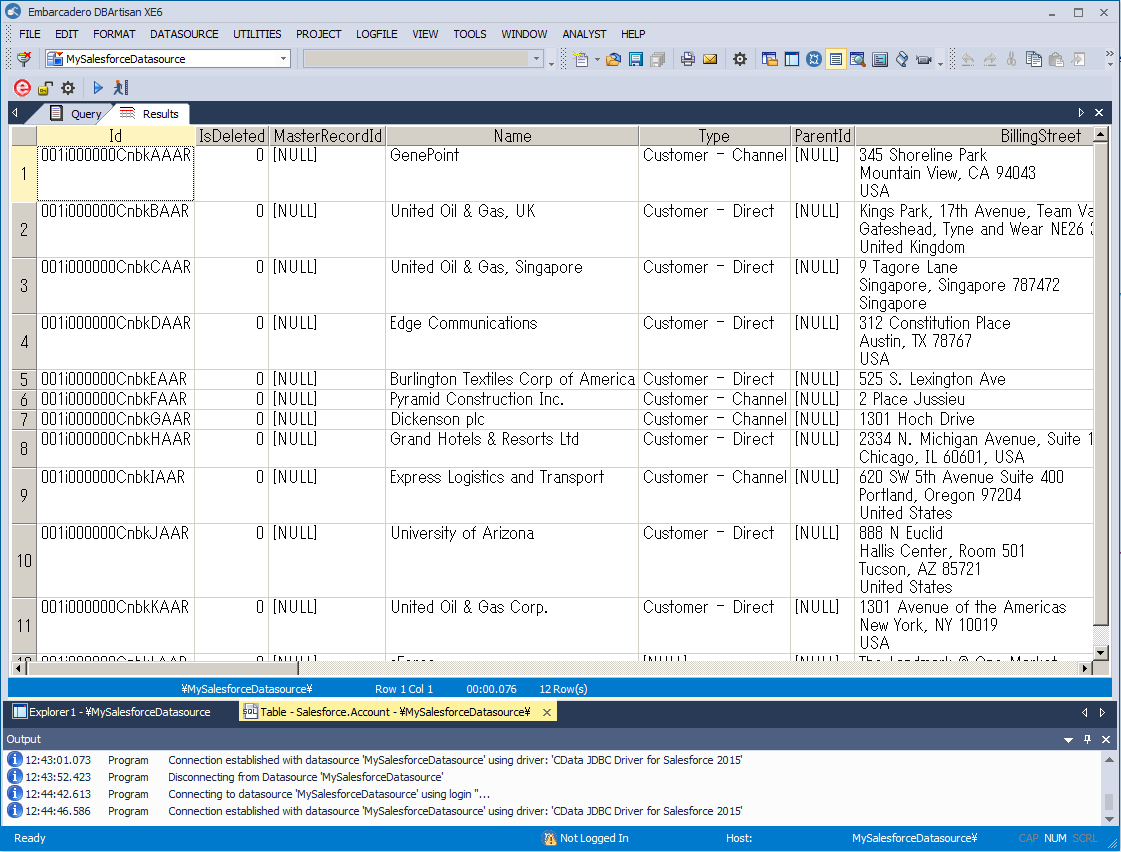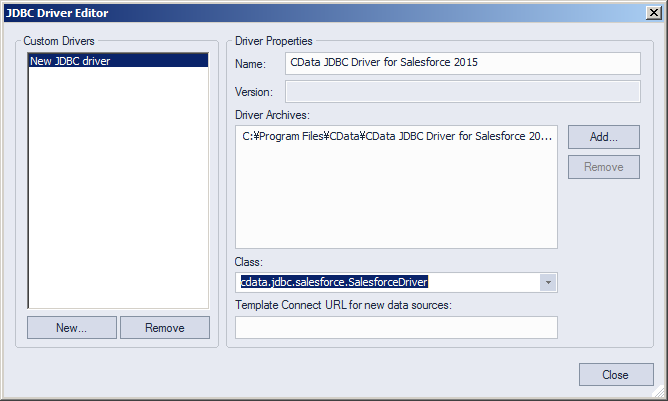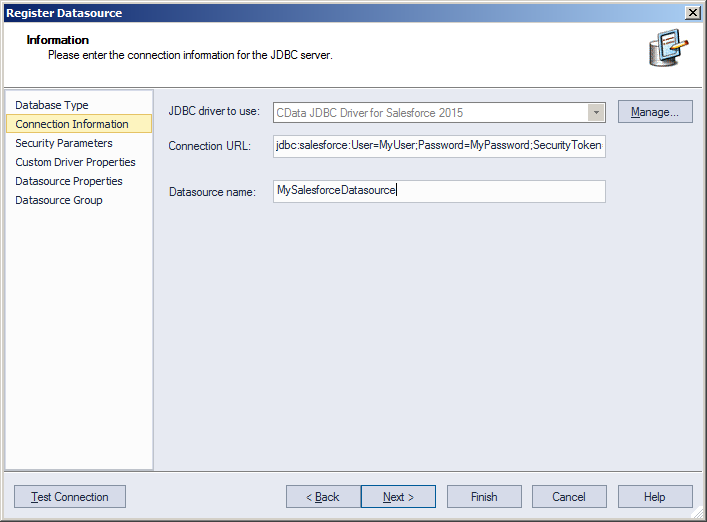Discover how a bimodal integration strategy can address the major data management challenges facing your organization today.
Get the Report →Manage XML Data in DBArtisan as a JDBC Source
Use wizards in DBArtisan to create a JDBC data source for XML.
The CData JDBC Driver for XML seamlessly integrates XML data into database management tools like DBArtisan by enabling you to access XML data as a database. This article shows how to create a JDBC source for XML in DBArtisan. You can then edit data visually and execute standard SQL.
Integrate XML Data into DBArtisan Projects
Follow the steps below to register XML data as a database instance in your project:
- In DBArtisan, click Data Source -> Register Datasource.
- Select Generic JDBC.
- Click Manage.
- In the resulting dialog, click New. Enter a name for the driver and click Add. In the resulting dialog, navigate to the driver JAR. The driver JAR is located in the lib subfolder of the installation directory.
![The JDBC driver definition in the Register Datasource wizard. (Salesforce is shown.)]()
-
In the Connection URL box, enter credentials and other required connection properties in the JDBC URL.
See the Getting Started chapter in the data provider documentation to authenticate to your data source: The data provider models XML APIs as bidirectional database tables and XML files as read-only views (local files, files stored on popular cloud services, and FTP servers). The major authentication schemes are supported, including HTTP Basic, Digest, NTLM, OAuth, and FTP. See the Getting Started chapter in the data provider documentation for authentication guides.
After setting the URI and providing any authentication values, set DataModel to more closely match the data representation to the structure of your data.
The DataModel property is the controlling property over how your data is represented into tables and toggles the following basic configurations.
- Document (default): Model a top-level, document view of your XML data. The data provider returns nested elements as aggregates of data.
- FlattenedDocuments: Implicitly join nested documents and their parents into a single table.
- Relational: Return individual, related tables from hierarchical data. The tables contain a primary key and a foreign key that links to the parent document.
See the Modeling XML Data chapter for more information on configuring the relational representation. You will also find the sample data used in the following examples. The data includes entries for people, the cars they own, and various maintenance services performed on those cars.
Built-in Connection String Designer
For assistance in constructing the JDBC URL, use the connection string designer built into the XML JDBC Driver. Either double-click the JAR file or execute the jar file from the command-line.
java -jar cdata.jdbc.xml.jarFill in the connection properties and copy the connection string to the clipboard.
![Required JDBC connection properties in the Register Datasource wizard. (Salesforce is shown.)]()
Below is a typical connection string:
jdbc:xml:URI=C:/people.xml;DataModel=Relational; - Finish the wizard to connect to XML data. XML entities are displayed in the Datasource Explorer.
You can now work with XML data as you work with any other database. See the driver help documentation for more information on the queries supported by the XML API.









